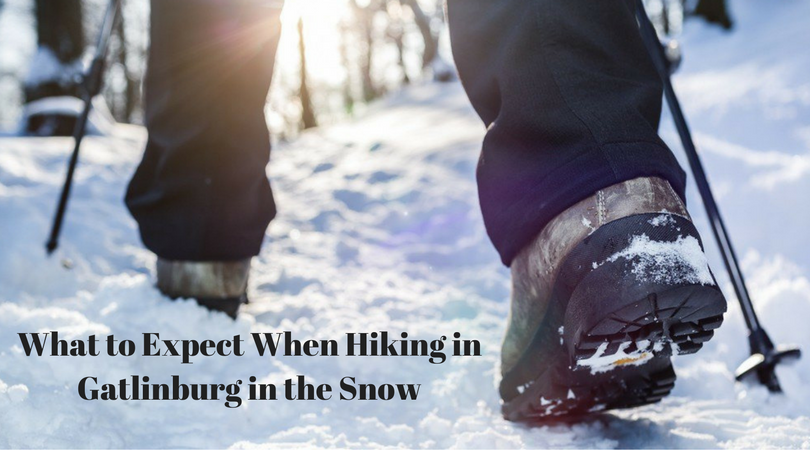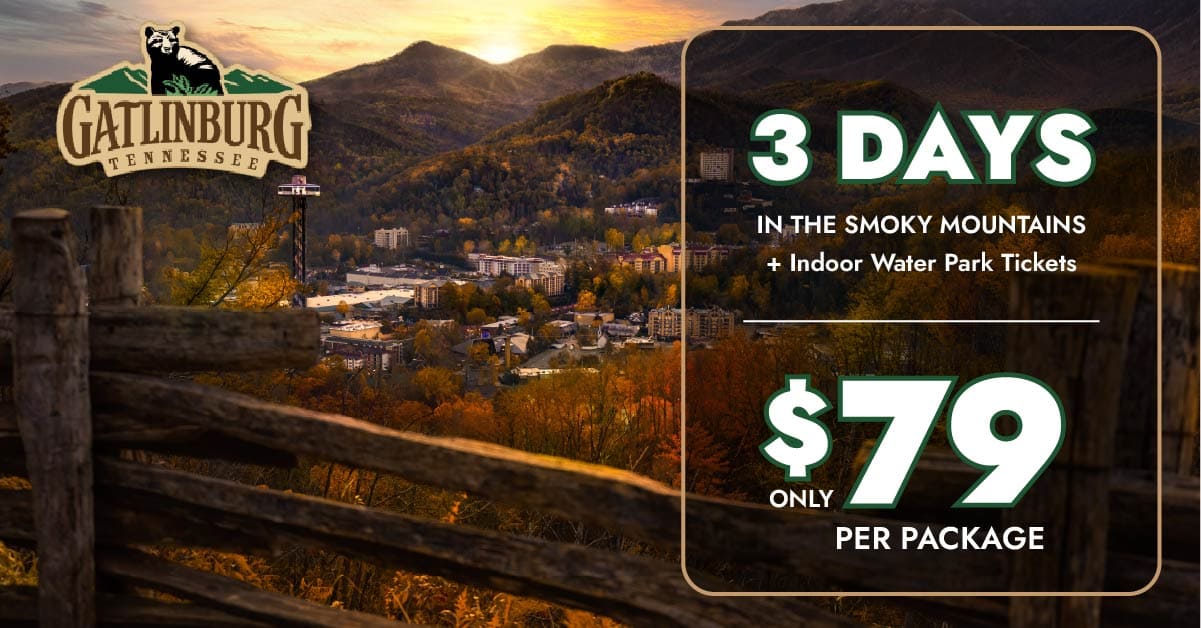Hiking in the Smoky Mountains is hands-down, one of the most exciting things that families vacationing to the area can do. Not only does this outdoor activity help guests get a closer view of the natural beauty of the area.
That being said, hikers planning on hiking in the Smoky Mountains in the snow should be aware of before hitting the trail. To make sure you and your family are prepared for a fun and safe hiking experience, be sure to check out our winter hiking tips below!
Snow-Covered Trails
This may go without saying, but if you are hiking in the Smoky Mountains in the snow, you shouldn’t be surprised if you find that much of the trail may not be visible. This is more common for hikers who are looking to get an early start after a fresh snowfall because that means you are exploring the trails before most of the other hikers for the day.
The way to make sure you can stay safe during this is to make sure you bring a hiking map that details the course that your preferred trail takes. Thankfully, the park rangers in the Great Smoky Mountains National Park have done a really good job of making sure that all the hiking trails are clearly marked.
Slippery Conditions
Although the snow is beautiful to look at, with it also comes pretty slippery conditions in terms of the Smoky Mountain hiking trails. When the snow begins to melt, the leaves under it will become pretty slippery.
You can prepare for the slightly slippery conditions by making sure you wear appropriate shoes when hiking in the Smoky Mountains in the snow. We suggest hikers choose shoes that are durable, offer good arch and ankle support, have a thick sole, and are water-resistant.
You can pick up a good pair of Smoky Mountain hiking shoes at any of the many outdoor adventure retailers in the area. A couple of our favorite outdoor shops in Gatlinburg and the area include:
- Bass Pro Shops
- Columbia Sportswear
- Columbia Sportswear
Colder Temperatures
Similar to expecting to find snow on the trails, hikers planning on hiking in the Smoky Mountains in the snow should expect to find pretty cold temperatures, especially the further up in the mountains you climb.
The best way to prepare for the drop in temperature along the hiking trail is to remember to wear plenty of layers when you go hiking in the Smoky Mountains in the snow.
Remember, if you get too hot you can always take layers off and put them in your backpack. The last thing you want is to get halfway through the hike and realize that you do not have enough clothing to stay warm.
Hoar Frost
Hoar frost is a fancy name for the large ice crystals that form on the plants, trees and ground after a hard snow in the Smoky Mountains. A beautiful sight, hoar frost is also what you see when you are looking at the mountains from a distance and see white caps even though it has not snowed latest.
If you are hiking in the Smoky Mountains after the temperatures have begun to rise for the day, do not be surprised if you hear a loud crashing sound. This is the noise that the frost makes when it begins to melt and detaches.
Ice Flowers
Ice flowers are a result of water in the soil freezing and pushing its way up through the ground. Also known as ice needles, ice flowers do not have petals. Instead, they look more like tubes of toothpaste coming up through the ground.
However, ice flowers can also be the name of the flowers on the ground and the trees that find themselves covered by ice when the temperatures drop.
Hiking during any season of the year can bring it’s own series of rewards and challenges in the Smoky Mountains. Winter hiking in the Smokies definitely has some pros and cons to consider before you venture out into a winter wonderland.
Pros
There are plenty of reasons to enjoy winter hiking in the Smokies. Besides the chance to hike in the snow and see cool ice formations, hikers can likely expect:
- Fewer Crowds – Winter is the slowest season in the national park, so it is the best time to cross some popular trails off your wish list.
- Less Leaf Cover – Many hiking trails have far better views once the forests shed leaf cover and underbrush.
- Better Visibility – You can see for miles on a cold, clear day in winter that provides better views than during summer months.
- Animals and Pests are Less Active – If you hate mosquitos or live in constant fear of running into bears, winter hikes in the Smokies are perfect for you.
- Natural Beauty – With ice formations on waterfalls and snow-capped mountains, the natural beauty of winter can be full force in the mountains.
Cons
Winter hiking in the Smoky Mountains offers a unique set of challenges to bear in mind.
- Poor Trail Conditions – Large sections of frozen water can develop on trails, making them hazardous to cross. Take your time and tread carefully over ice.
- Cold Temperatures – As hikers reach higher elevations, the weather can become even more extreme with colder temperatures, higher winds, and colder wind chill.
- Streams and Rivers – The water levels are generally higher in during the winter. Stream crossings without bridges are often only a series of stepping stones that can easily become submerged.
- Road Closures – After a weather event like a snowstorm or ice storm, it’s likely that roads in the higher elevations of the park will be closed.
- Less Daylight – As the days grow shorter, so does the time you have to hike in the daylight.
You and your family will have a fun adventure and feel like vacation royalty in Gatlinburg.









